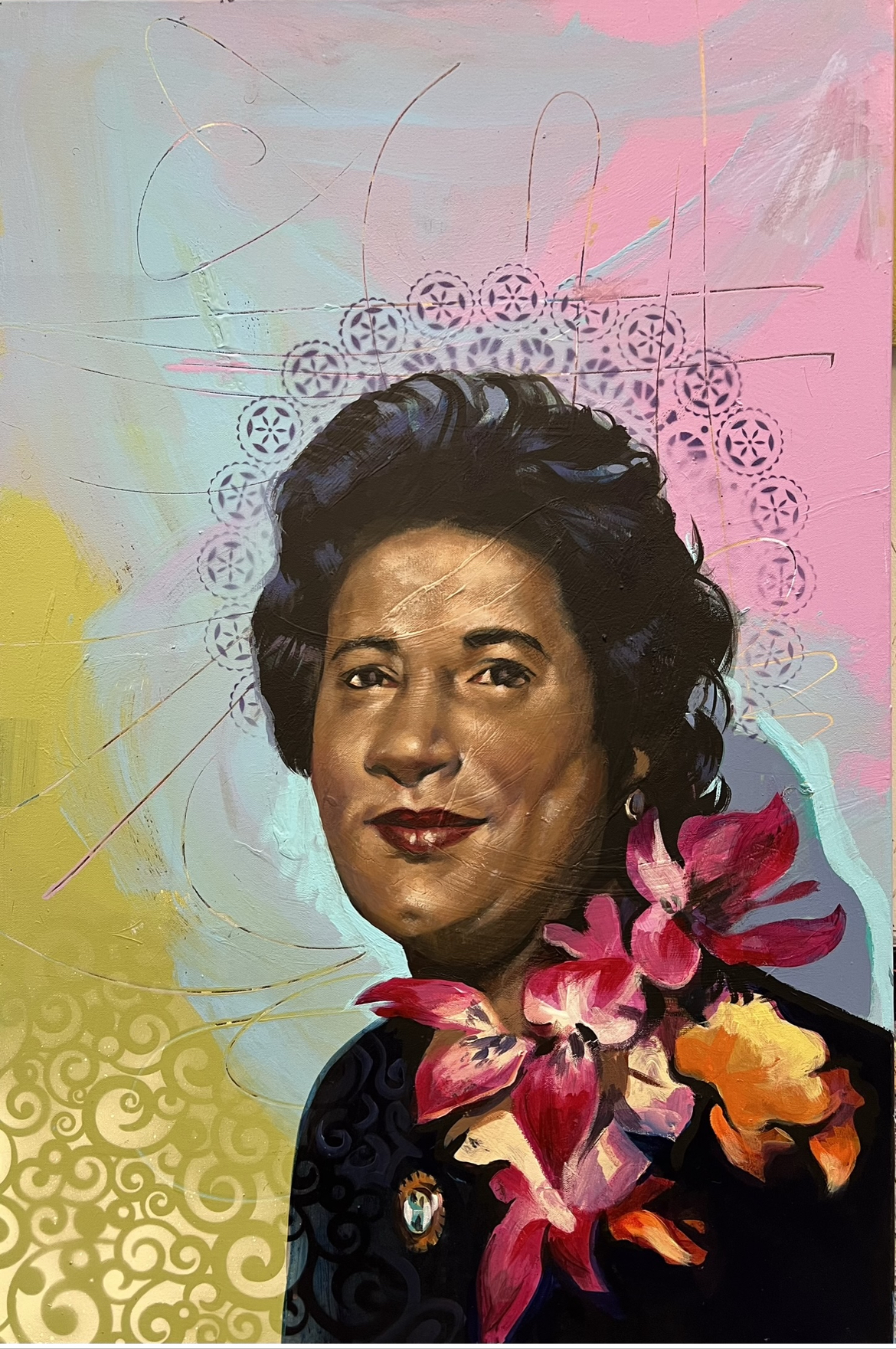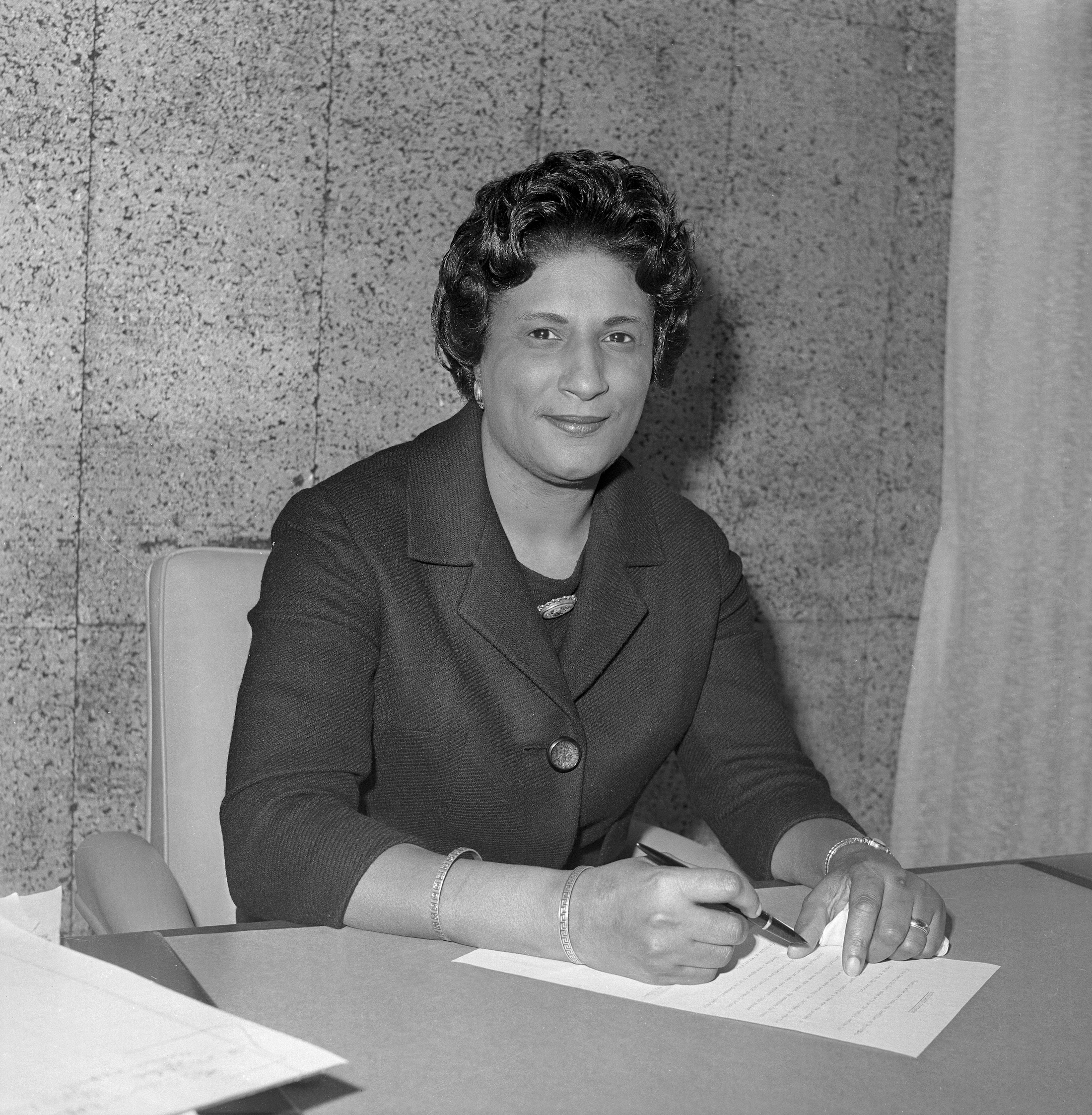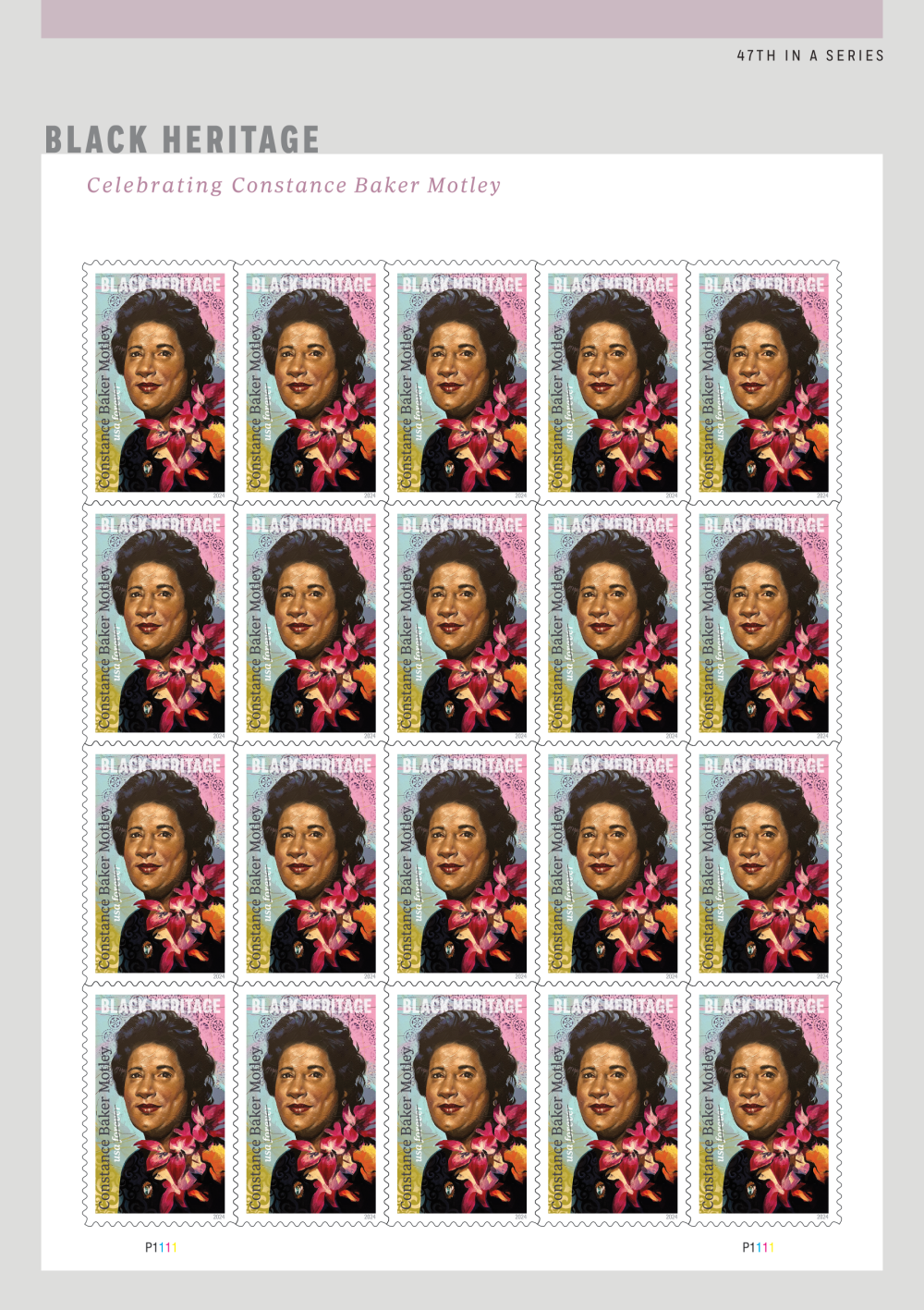
The Life and Work of a Transformative Judge
A new stamp honoring civil rights pioneer Constance Baker Motley held an honored spot on the program of the 2024 annual meeting of the Association for the Study of African American Life and History (ASALH). On February 24, the group unveiled the Forever® stamp honoring Judge Motley, just weeks after the U.S. Postal Service issued it on January 31.
ASALH Executive Director Sylvia Cyrus, who sits on the board of the Smithsonian National Postal Museum, says that stamps featuring Black Americans have become part of the group’s regular agenda. “We’re a history organization,” she explains, “and postage stamps play an important role in honoring our history and getting it out to the world.”
A hero’s continued relevance
U.S. House Minority Leader Hakeem Jeffries (D-NY) and his brother Dr. Hasan Jeffries, professor of history at Ohio State University, both served as keynote speakers for the ASALH annual meeting.
“Congressman Jeffries surprised the audience because he was so well-versed in history and really appreciated the importance of commemorating someone like Constance Baker Motley,” remarks Dr. Zebulon Miletsky, chair of ASALH’s Marketing Committee. “He presented her as a good example of Black leadership roles in the rule of law and in government. It just seems incredibly relevant to me today.”
USPS Director of Stamp Services Lisa Bobb-Semple presided over the actual unveiling after the Jeffries brothers spoke.
“One of the most important goals of our stamp program is to raise awareness and celebrate the people, places, and things that represent the very best of our nation — the very best of us,” Bobb-Semple said in her remarks.

“This year as we honor Judge Motley, it’s hard not to feel this recognition was overdue, for she lived a remarkable life of many firsts. Through her work and her example, Judge Motley showed millions of Americans what is possible — and left an indelible mark on our nation that is both good and great.”
New York roots
Miletsky explains that members of ASALH’s Manhattan branch were especially excited about the stamp issuance because of Motley’s long roots in New York City.
Although born and raised in New Haven, Connecticut, Motley studied and worked in New York. With degrees from New York University and Columbia University Law School, she spent the first 20 years of her extraordinary career with the NAACP Legal Defense Fund in Manhattan. She went on to represent the Upper West Side and Harlem in the New York State Senate, and then served as Manhattan borough president before being appointed by President Lyndon B. Johnson to the U.S. District Court for the Southern District of New York, in 1966.

Often, she was the first African American woman to hold these roles.
“She’s not necessarily a household name for most people, but she did a lot of the behind-the-scenes work on the road to Brown [v. Board of Education],” notes Miletsky, referring to the Supreme Court’s 1954 school desegregation decision.
A professor of African American History at Stony Brook University (State University of New York), Miletsky teaches his students about Motley. He calls her an example of the different minds that may be involved in justice work, outside the spotlight. She was not as well-known as Thurgood Marshall, the U.S. Supreme Court justice and her onetime mentor at LDF, but “when you look at the history and some of the legal bases that she herself tried, the work that Contance Baker Motley did was transformative,” Miletsky says. “It opened doors that would not have been opened. Her breaking ground with segregation, Jim Crow—she’s a Black woman at an early time, breaking that glass ceiling. That’s very important. She was a history maker.”
Bobb-Semple agrees. “Judge Motley is now part of an illustrious group of Black men and women on stamps that includes Frederick Douglass, Harriet Tubman, Martin Luther King Jr., Rosa Parks, Maya Angelou, Jackie Robinson, Thurgood Marshall, Ella Fitzgerald, Gwen Ifill, and Toni Morrison, to name just a few.”
An aesthetically beautiful stamp
Miletsky finds the stamp, which features an acrylic-on-canvas portrait by artist Charly Palmer, “aesthetically beautiful,” too. “We’re so used to seeing people from that era in black and white, and this in color, with the flowers, makes you want to know more.”

As it happens, Palmer based his artwork on a 1964 black-and-white photograph, but the style is current and improvisational. Besides color, he introduced stenciled circular shapes around Motley’s head to subtly suggest royalty, and heavy brushstrokes and scratches to provide more texture and bring the portrait to life.
“Not only is the painting vibrant,” says art director Derry Noyes, “but it’s also suffused with energy, showcasing Motley’s femininity as well as her formidable strength.”